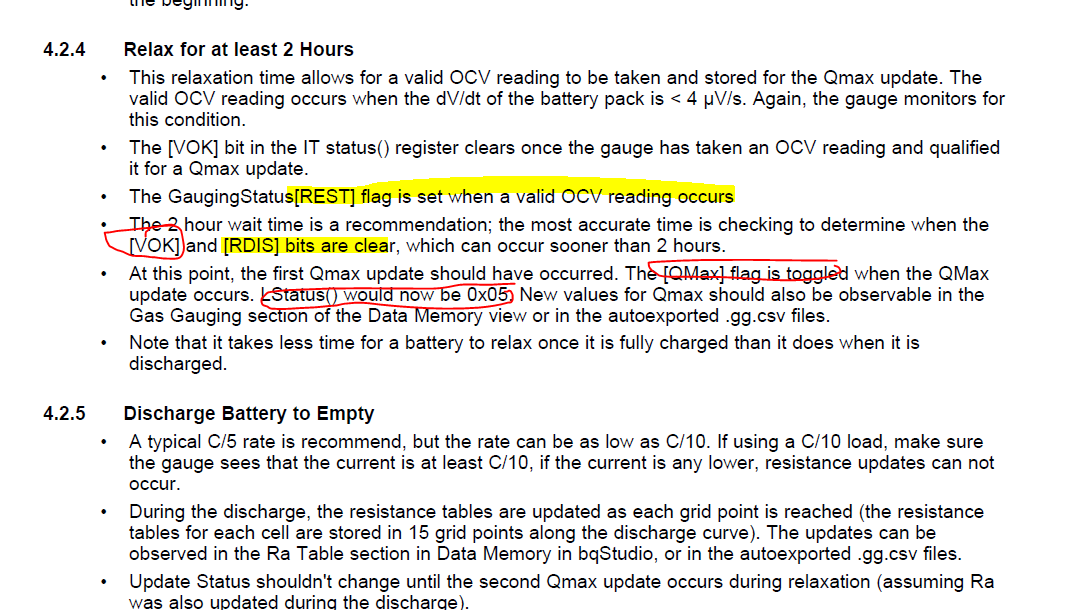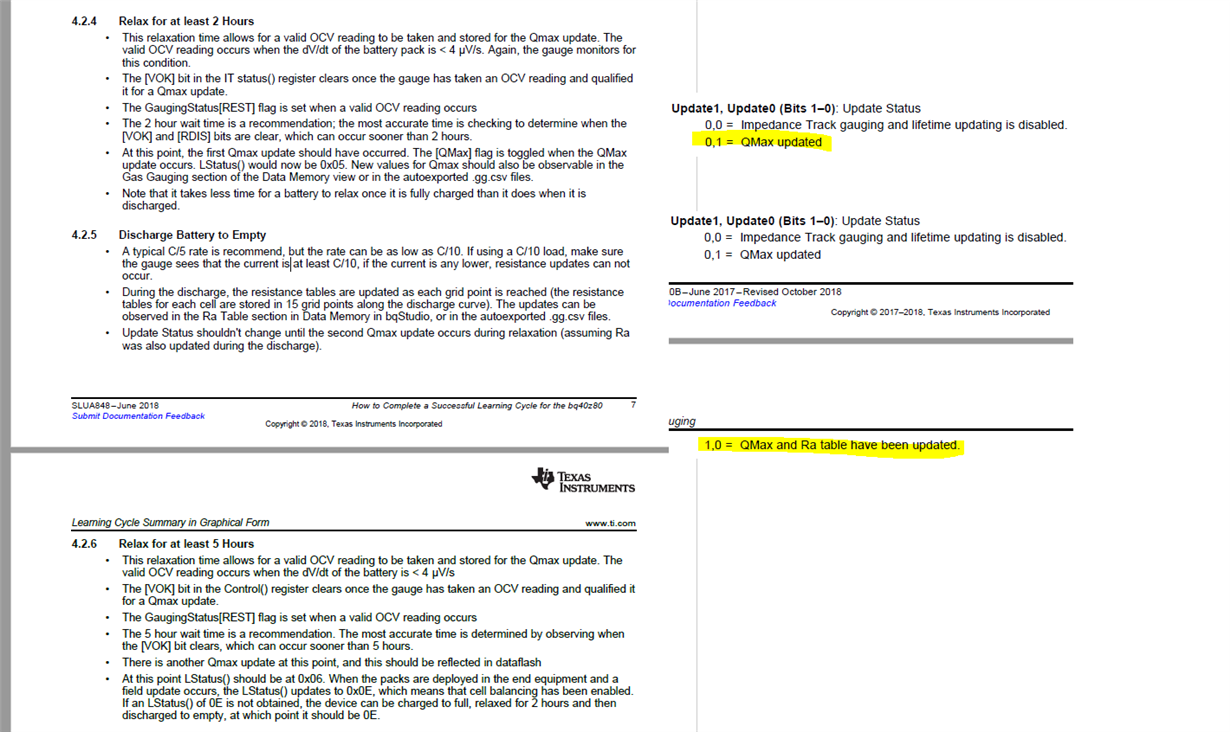Other Parts Discussed in Thread: BQ40Z80, GPCCHEM, BQSTUDIO
Hi,
Me and a customer are looking into the Battery Charger: BQ40Z50-R2.
We follow the guide: "How to Complete a Successful Learning Cycle for the bq40z80".
Which states:
1. Discharge battery to empty
2. Relax for 5 hours --> Everything looks good this far
3. Charge battery to full
4. Relax for 2 hours --> Problems occur here
We cannot get clear the "VOK", change the "Lstatus" to 0x05 nor toggle the "QMax flag".
Are perhaps OC:s prohibiting the BQ to fully charge? Or what could be the reason behind the Lstatus, QMax & VOK.
I have attached 2 pictures illustrating the registers before and after, which shows that REST has been set.
I would like to share the logs, though they happen to be 39 Mb meaning that could probably be hard...
Any advice would be highly appreciated.
Many thanks,
Kristoffer



